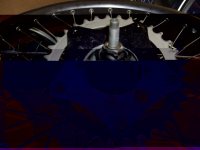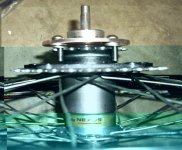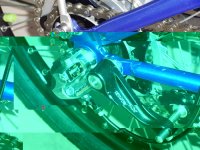GGoodrum
1 MW
Ah, okay I'm finally getting the idea about what you are talking about. This truly is a "series" configuration, but with the motor in the middle instead of the pedals, right? I'm still having a tough time visualizing how you would "attach a drive sprocket" to the case, and then screw on a FW.
I'm not so sure going to a larger diameter is the right answer. That will limit the installation options. You can get more torque just by making these longer. If you don't need the extra torque, they will run cool as a cucumber. We also aren't really maxing out the potential performance of the 3210/3220s, due to the 50V RC limit. If you double the voltage you can get the same power at half the current, which really cuts down the heat generated. Heat losses go up as square function of the current.
-- Gary
I'm not so sure going to a larger diameter is the right answer. That will limit the installation options. You can get more torque just by making these longer. If you don't need the extra torque, they will run cool as a cucumber. We also aren't really maxing out the potential performance of the 3210/3220s, due to the 50V RC limit. If you double the voltage you can get the same power at half the current, which really cuts down the heat generated. Heat losses go up as square function of the current.
-- Gary




